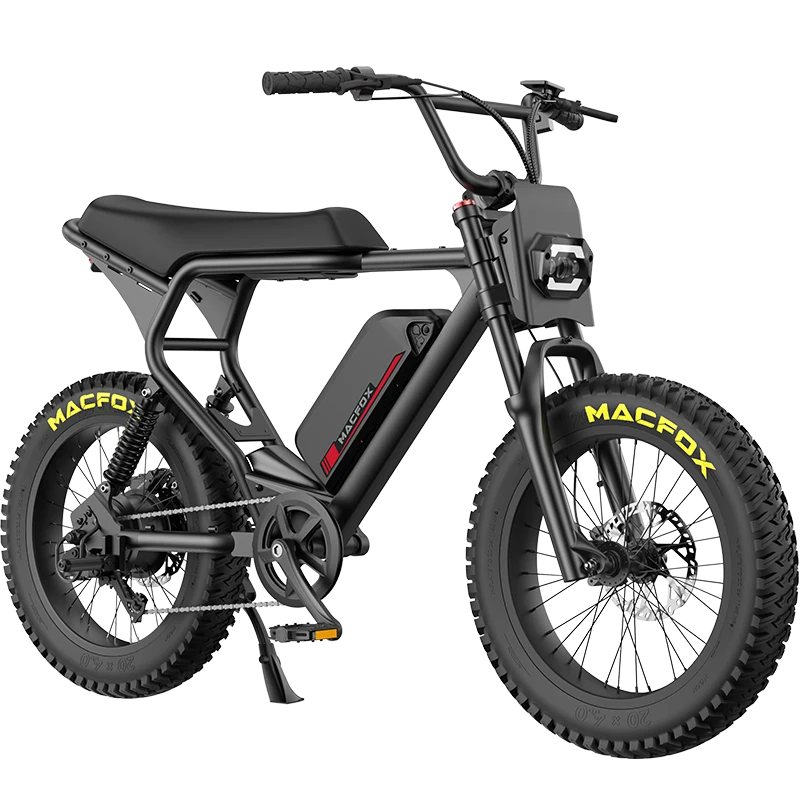Electric bicycles (e-bikes) have become a major mode of transportation in cities and remote areas, providing an environmentally friendly, efficient and fun alternative to traditional bicycles. However, the popularity of e-bikes has raised concerns about the safety of the lithium-ion batteries that power them. Concerns are growing about the potential fire hazards associated with these batteries. This comprehensive overview aims to provide an in-depth understanding of the world of lithium-ion batteries, providing informative advice and ideal techniques for their safe use and storage. By understanding and applying these standards, e-bike users can significantly reduce the risk of fire incidents and ensure a safer riding experience.
Understanding Lithium-Ion Batteries
Lithium-ion batteries are the power source for e-bikes and are known for their performance and durability. They change the way we power electronic devices, from smart devices to electric vehicles. What makes these batteries unique is their high power density, which allows them to store more energy in a smaller area, making them ideal for e-bikes. For example, the electric commuter bike and off road electric bike launched by Macfox both use lithium batteries. However, with the power of the world comes great responsibility. These batteries require precise handling and care to ensure safety and optimal efficiency.
The Composition of Lithium-Ion Batteries
Each lithium-ion battery is an intricate assembly of cells where the magic of energy storage happens. These cells consist of a positive electrode (cathode), an adverse electrode (anode), and an electrolyte that brings lithium ions in between the two throughout charging and discharging. This complex interior framework is crucial for the battery's feature yet also makes it sensitive to outside elements like temperature level and physical damage.
Why Lithium-Ion Batteries are Prone to Fires
The fact that lithium-ion batteries can end up being fire hazards mainly hinges on a phenomenon known as thermal runaway. This happens when the temperature inside the battery escalates to a factor where it induces further warm generation, creating a dangerous feedback loophole. Common triggers for this include overcharging, physical damage, short circuits, and even producing flaws. Understanding these triggers is the first step in protecting against possible fire occurrences.
Related Reading: A Guide to Cleaning Your E-Bike
Preventing E-Bike Battery Fires
The trick to preventing e-bike battery fires depends on comprehending the nuances of battery care and maintenance. By adhering to the following practices, customers can not just extend the life of their batteries but also dramatically mitigate the risk of fire hazards.
1. Proper Charging Practices
- Make Use Of the Right Battery Charger: It is important to use a bicycle battery charger provided by the manufacturer or officially recommended. Using an incorrect charger can cause a voltage or current mismatch, which can lead to overheating.
- Stay Clear Of Overcharging: One common mistake is leaving the battery to bill overnight or for prolonged periods. This can lead to overcharging, which increases the threat of getting too hot and potentially causing fires.
- Charge in Safe Locations: Pick a well-ventilated location for billing, away from flammable products or liquids. This minimizes the threat of fire spreading in case of a battery malfunction.
2. Regular Battery Inspection and Maintenance
- Evaluate for Damages: Frequently analyzing your battery for indicators of wear and tear is important. Search for any physical problems like cracks, leakages, or protruding. These can be forerunners to a lot more serious troubles.
- Keep It Clean: Make sure that both the battery and its links are without dust, dust, and gunk. Poor links can result in inefficient charging and raised warm generation.
- Expert Maintenance: If you observe any type of uncommon habits or damage, it's ideal to have your battery examined and serviced by a specialist. Normal professional examinations can capture problems before they intensify.
3. Safe Storage Practices
- Temperature Level Control: Storing your battery in an amazing, dry area is key. Severe temperature levels, either warm or cold, can weaken the battery's efficiency and increase the risk of fire.
- Avoid Dampness: Water and electronics don't blend. Moisture can trigger short circuits in the battery, and bring about prospective fire threats.
- Physical Defense: Securing your battery from drops, influences, and vibrations is crucial. Physical damage can endanger the inner structure of the battery, leading to potential dangers.
4. Handling Battery Disposal Responsibly
- Appropriate Disposal: Lithium-ion batteries should never be gotten rid of in regular trash. They need to be required to mark battery recycling facilities, where they can be refined securely.
- Be Careful of Old Batteries: Even if a battery isn't holding a cost, it can still be a fire danger. Make sure these batteries are also taken care of properly to avoid potential hazards.
5. Understanding the Manufacturer’s Guidelines
Check out the Manual: It's necessary to extensively review and comprehend the supplier's directions provided with your e-bike and its battery. This includes standards on charging, storage, and handling.
Adhere To Suggestions: Abiding by the supplier's standards not only makes certain security but also aids in maintaining the battery's long life and efficiency.
Detecting Early Warning Signs
Being able to detect early indications of a failing or malfunctioning battery can be the distinction between a safe ride and a high-risk scenario. Pay close attention to these indications:
- Unusual Smells: A weird or chemical scent emanating from the battery can be an indication of inner damage or overheating.
- Excessive Warm: If the battery becomes excessively hot during use or charging, it's a clear indication that something is wrong.
- Physical Adjustments: Any type of recognizable adjustments in the battery's look, like swelling or staining, are warnings that ought to not be ignored.
Emergency Response to E-Bike Battery Fires
Despite all precautions, if a fire does occur, it's important to know exactly how to react successfully:
- Evacuate the Location: Focus on the safety of your own and others by relocating far from the fire.
- Call Emergency Situation Services: Fire involving lithium-ion batteries can be challenging to extinguish. It's vital to obtain professional assistance by calling the fire department instantly.
- Use Appropriate Fire Extinguishers: If it's safe to do so, and if you have accessibility to a Course D fire extinguisher, utilize it to include the fire. These extinguishers are particularly developed for electrical fires.
Staying Informed and Updated
Keep Updated: Remain abreast of the current e-bike and battery security. Manufacturers usually launch updates, safety notifications, and recall info that are vital for your safety and security.
Participate in Safety And Security Training: Taking part in security workshops or training sessions can equip you with extra expertise and abilities for dealing with lithium-ion batteries safely.
Conclusion
E-bike lithium-ion batteries, when made use of and preserved properly, supply a safe and effective source of power. By understanding the intricacies of lithium-ion batteries and implementing these safety tips and best techniques, e-bike individuals can greatly decrease the danger of fire risks. Safety is a continuous trip that starts with notified and liable handling.
FAQs
Can I utilize any kind of battery charger with my e-bike battery?
No, it's important to utilize the charger supplied by the maker or a suitable one they suggest. Utilizing an incompatible charger increases the risk of getting too hot and fires.
Exactly how can I tell if my e-bike battery is damaged?
Regularly check for indications of damages such as splits, leakages, bulging, uncommon smells, or too much heat. If you notice any one of these, it's important to have your battery expertly checked.
Is it safe to bill my e-bike battery overnight?
Billing lithium-ion batteries neglected, especially overnight, is not advised. Overcharging can cause getting too hot, which raises the danger of fire.


















